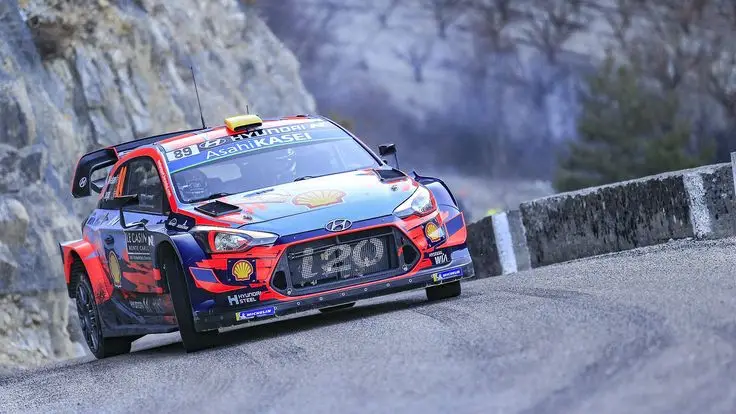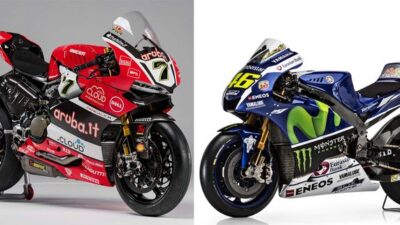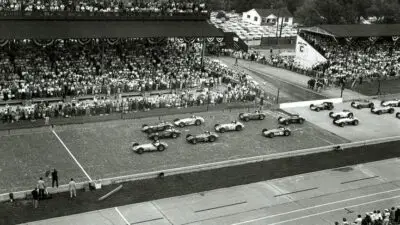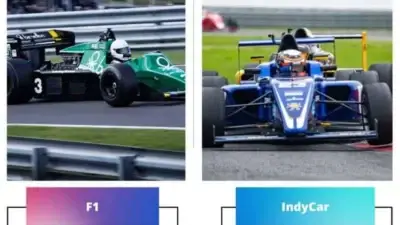The World Rally Championship (WRC) represents the pinnacle of international rally racing, combining speed, skill, and strategy across diverse terrains worldwide. Since its inauguration in 1973, the WRC has captivated audiences with its heart-pounding action as drivers navigate challenging courses from snow and ice to gravel and tarmac. The championship features elite drivers competing in modified production cars across approximately 13 three-day events each year, making it one of motorsport’s most demanding competitions.
Unlike circuit racing, rally drivers face unpredictable conditions with co-drivers providing crucial pace notes while racing against the clock rather than directly against other competitors. The FIA-governed championship includes multiple categories: the main WRC class, along with support championships like WRC2 and WRC3, providing opportunities for developing talent. The series has evolved dramatically over decades, from the Group B “golden era” of the 1980s to today’s sophisticated hybrid rally cars.
Each WRC season crowns both driver and manufacturer champions based on points accumulated throughout the year, with legendary names like Sébastien Loeb, Sébastien Ogier, and manufacturers such as Subaru, Toyota, and Ford etching their names in rally history. Events like Monte Carlo Rally and Rally Finland have become iconic tests of driving prowess, attracting fans to witness these specialized machines tackling everything from icy mountain passes to high-speed forest roads.
Key Takeaways
- The WRC combines specialized rally cars, skilled driver-navigator teams, and diverse global terrains to create motorsport’s ultimate test of precision driving.
- Championship points are awarded in both driver and manufacturer categories across approximately 13 annual events featuring different surface challenges.
- Rally racing differs fundamentally from circuit racing through its time-trial format, changing road conditions, and the critical role of co-drivers.
Understanding the World Rally Championship
The World Rally Championship stands as a premier motorsport competition that tests drivers’ skills across diverse and challenging terrains worldwide. This international series combines precision driving, strategic planning, and cutting-edge automotive technology.
What Sets WRC Apart From Other Motorsport Series
The World Rally Championship differs dramatically from circuit racing like Formula One. Instead of competing on prepared tracks, WRC drivers navigate public roads that are temporarily closed for competition.
Rallying occurs on multiple surfaces including gravel, tarmac, snow, and ice – often within the same event. This demands exceptional adaptability from both drivers and vehicles.
WRC cars are based on production models but feature extensive modifications for performance and safety. They must handle jumps, extreme weather conditions, and varying grip levels while maintaining high speeds.
The competition format features point-to-point stages rather than lap racing. Drivers compete against the clock rather than directly against other competitors, adding a unique psychological element to the sport.
Primary Rules and Competition Format
The WRC season typically consists of 13 three-to-four-day rally events spread across the calendar year. Each rally is divided into special stages where timing matters most.
Competition Structure:
- Drivers complete reconnaissance runs to create detailed pace notes
- Special stages are timed sections where competitors drive at maximum speed
- Road sections connect the stages (must follow traffic laws)
- Service parks allow limited time for repairs and adjustments
The championship awards points based on finishing positions in each rally, with additional points available from the “Power Stage” – the final competitive section of each event.
WRC includes multiple championship categories. The main WRC class represents the highest level, while WRC2 and WRC3 serve as support championships for developing talent.
Role of the FIA in WRC Governance
The Fédération Internationale de l’Automobile (FIA) owns and governs the World Rally Championship. As motorsport’s global governing body, the FIA establishes and enforces regulations that define the competition.
The FIA’s technical regulations control vehicle specifications, ensuring fair competition while promoting safety innovations. These rules cover everything from engine power to aerodynamics and safety equipment.
Safety standards receive particular attention, with the FIA implementing rigorous protocols for event organization, vehicle construction, and emergency response.
The FIA also manages the sporting regulations that define how competitions run. This includes rules for starting orders, time penalties, and championship points allocation.
Inaugurated in 1973, the WRC represents the FIA’s second oldest world championship after Formula One, demonstrating its enduring importance in global motorsport.
Key Eras in WRC History
The World Rally Championship has evolved through distinct periods marked by technological innovation and regulatory changes, each bringing unique cars and legendary drivers to the forefront of rally racing.
The Early Years and Iconic Cars
The WRC officially began in 1973, though international rallying existed long before. The early championship featured rear-wheel-drive machines that would become legendary in motorsport history.
The Alpine A110 dominated the inaugural season, winning most events and securing the first manufacturers’ title. Soon after, the Lancia Stratos revolutionized rally design with its purpose-built approach and striking wedge shape, helping Sandro Munari claim victory in multiple events.
Ford’s Escort RS models became fixtures of the early WRC, with drivers like Hannu Mikkola and Björn Waldegård showcasing incredible skill on varied terrains. Waldegård became the first drivers’ champion when the title was introduced in 1979.
These early years established rallying as a true test of both machine and human endurance across challenging conditions worldwide.
Group B: Power and Tragedy
The Group B era (1982-1986) represents both the most thrilling and dangerous period in WRC history. These revolutionary cars featured:
- Four-wheel-drive technology
- Turbochargers producing over 500 horsepower
- Lightweight construction with exotic materials
- Minimal safety regulations
Audi’s Quattro introduced four-wheel-drive to rallying, helping Stig Blomqvist secure the 1984 championship. Peugeot’s 205 T16 soon dominated with Timo Salonen and later Henri Toivonen at the wheel.
Walter Röhrl demonstrated extraordinary skill during this era, piloting the Audi Quattro and later the Lancia 037 – the last rear-wheel-drive car to win a championship.
Tragically, Group B ended following fatal accidents, including Toivonen’s crash in Corsica and a Ford RS200 incident involving Joaquim Santos that killed spectators. The FIA terminated the category in 1986, prioritizing safety over spectacle.
Group A: Regulation and Evolution
After Group B’s cancellation, Group A regulations brought production-based cars with enhanced safety measures to the WRC from 1987. This era emphasized reliability alongside performance.
The Lancia Delta Integrale dominated early Group A competition, winning six consecutive manufacturers’ titles (1987-1992). Drivers Juha Kankkunen and Miki Biasion each secured multiple championships with the Italian machine.
Japanese manufacturers soon rose to prominence. The Mitsubishi Lancer Evolution and Toyota Celica GT-Four became iconic rally cars, with Carlos Sainz claiming two drivers’ titles with Toyota. These fierce rivals pushed technological boundaries while maintaining connections to their road-going counterparts.
Group A fostered incredible competition with closer battles between teams. The era concluded with young talent emerging, including future champion Richard Burns who would make his mark in the next generation of rally cars.
The Modern World Rally Car Era
The introduction of World Rally Cars in 1997 marked a significant shift toward purpose-built machines with greater technical freedom while maintaining some production car elements. These vehicles featured:
- 2.0-liter turbocharged engines (later 1.6-liter)
- Sophisticated four-wheel-drive systems
- Advanced aerodynamics
- Standardized safety equipment
The early WRC era saw battles between Mitsubishi, Subaru, Ford, and Peugeot, with Colin McRae and Tommi Mäkinen becoming household names. Citroën later dominated with Sébastien Loeb winning nine consecutive championships (2004-2012).
Major regulation changes in 2011 introduced smaller turbocharged engines and in 2017 brought more dramatic aerodynamics and increased power. Toyota returned to the championship in 2017, joining Hyundai, Ford, and Citroën as major manufacturers.
The modern era continues to balance spectacle with sustainability, introducing hybrid technology in 2022 while maintaining the high-speed drama that has defined WRC throughout its history.
Structure and Championships of WRC
The WRC operates with distinct championship categories that reward excellence across different competitive levels. Points are awarded systematically throughout the season, determining champions in multiple classifications.
Drivers’ and Co-Drivers’ Championships
The Drivers’ Championship stands as the premier individual honor in rallying, recognizing the most successful driver across a full season. Points are awarded to the top ten finishers in each rally following a 25-17-15-12-10-8-6-4-2-1 system.
Co-drivers receive identical points to their drivers, earning their own championship title. This acknowledges their crucial role in navigation and timing during competitions.
The Power Stage adds an exciting dimension to the championship. This final competitive section of each rally awards bonus points (5-4-3-2-1) to the five fastest drivers, creating opportunities for additional scoring and strategic decisions.
Champions are crowned based on total points accumulated across all events in the calendar year. In case of a tie, the number of rally wins serves as the first tiebreaker.
Manufacturers’ Championship
The Manufacturers’ Championship operates independently from the Drivers’ title, though it follows the same point structure. Each registered manufacturer nominates scoring crews for each event, with only their best-performing cars earning points toward the team total.
Interestingly, it’s possible for different entities to win the two main championships. This happened in 2003 when Petter Solberg claimed the Drivers’ title with Subaru while Citroën secured the Manufacturers’ crown. Similar splits occurred in 2006 and 2007.
Manufacturer teams invest significantly in car development, crew selection, and strategy to maximize their championship prospects. This competition drives technological innovation within the sport.
Support Categories: WRC2, WRC3, and Junior WRC
The WRC pyramid includes several support championships that provide competitive opportunities for developing drivers and teams. These categories use more production-based vehicles with restricted modifications compared to top-tier WRC cars.
WRC2 serves as the main feeder series, featuring slightly less powerful cars than the premier class. Many future WRC stars develop their skills in this division before advancing to the top level.
WRC3 provides another competitive tier with more accessible technical regulations and lower operating costs. This category is particularly important for private teams and emerging talents.
The Junior WRC operates on selected events from the main WRC calendar, specifically targeting young drivers under a certain age. This championship uses identical cars to ensure equal competition and truly highlight driving talent rather than technical advantages.
Legendary Teams and Manufacturers
The World Rally Championship has been shaped by innovative manufacturers who pushed rally technology to its limits. These teams have created iconic cars and fostered legendary drivers who became household names in motorsport.
Toyota Gazoo Racing
Toyota’s rally history dates back decades, but Toyota Gazoo Racing has emerged as a dominant force in recent years. After returning to WRC in 2017, the team quickly established itself among the elite.
Led by four-time champion Tommi Mäkinen as team principal initially, Toyota captured the manufacturers’ title in 2018. The Yaris WRC proved to be a formidable machine on all surfaces.
Toyota’s commitment to developing young talent alongside experienced drivers has been a successful strategy. The team has continued this winning formula with the GR Yaris Rally1 hybrid vehicle in the current era of competition.
Hyundai and M-Sport
Hyundai Motorsport entered the modern WRC in 2014 and quickly became championship contenders. Their persistence paid off with manufacturers’ championships in 2019 and 2020.
M-Sport has a unique position in WRC as a private team that competes against factory outfits. Founded by Malcolm Wilson, they’ve maintained a strong relationship with Ford despite not being a full factory team.
The team’s success with the Ford Focus and later the Ford Fiesta has been remarkable. M-Sport captured the manufacturers’ title in 2006 and 2007, and again in 2017 with the M-Sport Ford World Rally Team.
Historic Teams: Lancia, Ford, Peugeot, and Citroën
Lancia dominated the WRC in the 1970s and 1980s, winning an unprecedented six consecutive manufacturers’ titles. The Lancia Delta Integrale became an icon of rally racing during this golden era.
Peugeot revolutionized the sport with the 205 T16 in the Group B era, and later returned to success with the Peugeot 206 WRC, winning the manufacturers’ title in 2000, 2001, and 2002.
Citroën became a dominant force in the 2000s with Sébastien Loeb, capturing eight consecutive manufacturers’ titles between 2003 and 2012. Their Xsara and C4 WRC cars were engineering masterpieces.
Ford has been a consistent presence in the WRC since its inception, with the Escort, Sierra, Focus, and Fiesta all proving successful in different eras.
Iconic Drivers and Co-Drivers
The World Rally Championship has produced remarkable talents who have shaped the sport through their skill, determination, and achievements. These individuals have conquered some of the most challenging terrains and conditions in motorsport.
Multiple World Champions
Sébastien Loeb stands as the most decorated driver in WRC history with nine consecutive championships from 2004 to 2012. His partnership with co-driver Daniel Elena created the most successful pairing in the sport’s history, amassing 79 rally victories.
Following Loeb’s dominance, Sébastien Ogier claimed eight championships, establishing his own legacy. Ogier demonstrated remarkable adaptability by winning titles with three different manufacturers: Volkswagen, Ford, and Toyota.
Tommi Mäkinen dominated the late 1990s, securing four consecutive championships from 1996 to 1999 with Mitsubishi. His aggressive driving style and consistency made him a formidable competitor during his era.
Era-Defining Competitors
Marcus Grönholm captured two world championships in 2000 and 2002 with Peugeot. Known for his straightforward approach and raw speed, the Finnish driver earned 30 rally victories throughout his career.
Petter Solberg became Norway’s first World Rally Champion in 2003, breaking the Finnish and French dominance. His flamboyant driving style and charismatic personality made him a fan favorite.
Colin McRae left an indelible mark on the sport as the youngest champion at age 27 when he won in 1995. The “Flying Scotsman” was renowned for his fearless approach and spectacular driving that captivated audiences worldwide.
Modern Stars of the WRC
Ott Tänak became Estonia’s first world champion in 2019, breaking the French dominance of Loeb and Ogier. His precise driving and determination have established him as one of the premier talents of his generation.
Thierry Neuville has been consistently at the top of the sport despite not yet claiming a championship. The Belgian driver has finished as runner-up in the championship five times, showcasing remarkable resilience.
Kalle Rovanperä made history as the youngest ever WRC champion at just 22 years old. The Finnish prodigy demonstrates exceptional car control and maturity beyond his years, often paired with co-driver Martijn Wydaeghe in recent seasons.
Signature Events and Rally Locations
The World Rally Championship features several iconic rally locations that challenge drivers with diverse terrains and weather conditions. These signature events have become legendary in motorsport for their unique characteristics and technical demands.
Monte Carlo Rally and Its Prestige
The Monte Carlo Rally stands as the jewel in the WRC crown. First held in 1911, it’s the oldest and most prestigious event on the calendar.
What makes Monte Carlo special is its treacherous mixed-surface stages. Drivers often face dry asphalt, wet roads, ice, and snow—sometimes all in a single stage. Tire choice becomes crucial and can make or break a driver’s chances.
The rally’s route through the French Alps creates dramatic backdrops as competitors navigate narrow mountain passes and hairpin turns. Night stages add another layer of difficulty, with headlights cutting through the darkness as cars tackle the Col de Turini—a legendary mountain pass that draws thousands of spectators.
Showcase Events: Rally Argentina, Rally Australia, Tour de Corse
Rally Argentina captivates with its challenging gravel roads and water crossings. The event features massive jumps and the infamous El Condor stage, where cars climb to over 2,000 meters altitude. Passionate South American fans line the routes in remarkable numbers.
Rally Australia brings unique challenges with fast forest stages and distinctive red clay surfaces. Wildlife can sometimes appear on stages, adding unpredictability. The coastal locations provide spectacular scenery.
Tour de Corse, nicknamed “Rally of 10,000 Corners,” tests precision on Corsica’s narrow, twisting asphalt roads. With little room for error, drivers must perfect their pacenotes. The Mediterranean island’s mountainous terrain creates dramatic elevation changes throughout the rally.
The Role of International Stages in WRC
The global reach of WRC events ensures the championship truly tests drivers across all conditions. From the snow-covered forests of Rally Sweden to the blazing heat of Safari Rally Kenya, international diversity creates a comprehensive challenge.
Each location demands specific skills and setups. Finland’s high-speed jumps require courage, while Greece’s rough roads test vehicle durability. This variety determines who becomes a true world champion rather than a specialist.
International stages also help expand the sport’s popularity. Local events become national celebrations, bringing economic benefits to host regions. The 2025 WRC calendar continues this tradition with events spanning multiple continents.
Television coverage showcases these diverse landscapes to global audiences, highlighting both the sport and the natural beauty of each location. This international aspect remains fundamental to WRC’s appeal and sporting integrity.
Frequently Asked Questions
The World Rally Championship generates many common questions from fans and newcomers alike. These answers cover everything from comparisons with other motorsports to viewing options and career paths.
What are the key differences between WRC and Formula 1 racing?
WRC and Formula 1 differ significantly in their racing environments and vehicle types. WRC takes place on various surfaces including gravel, tarmac, snow, and ice, while Formula 1 races occur on dedicated circuits.
WRC cars are modified production vehicles with all-wheel drive systems designed to handle rough terrain. Formula 1 cars are purpose-built single-seaters optimized for aerodynamics and speed on smooth surfaces.
The competition format also differs. WRC events span several days across multiple stages, while Formula 1 races typically last under two hours on a single track.
How can one watch the latest WRC events online?
The official WRC+ streaming service offers comprehensive coverage of all rally events with live stages, onboard cameras, and highlights.
Many countries also broadcast WRC events through sports networks like Red Bull TV, which provides free highlights and selected live content.
Social media platforms including YouTube and Facebook often feature clips and highlights from recent rallies, making it easy to follow the action.
Who are the current leaders in the WRC standings?
As of mid-2025, the WRC championship features intense competition among four champion drivers. These include defending champion Kalle Rovanperä, eight-time champion Sébastien Ogier, and Thierry Neuville.
Toyota Gazoo Racing and Hyundai Motorsport remain the dominant teams in the manufacturers’ standings, with Ford M-Sport maintaining a competitive presence.
The points system in WRC rewards both daily performance and overall rally results, keeping the championship battle dynamic throughout the season.
What does the WRC calendar look like for the current year?
The 2025 WRC season consists of approximately 13 events spread across different continents and surfaces. The season traditionally begins with the challenging Monte Carlo Rally in January.
Summer events include high-speed contests like Rally Estonia, which features wide gravel roads and frequent jumps through forest and lake regions.
The calendar includes iconic events like Rally Finland, known for its high speeds and big jumps, and ends with Rally Japan in November, creating a diverse championship that tests drivers across all conditions.
How can a new driver begin a career in the World Rally Championship?
Aspiring rally drivers typically start in national rallies or junior championships to build experience. The Junior WRC serves as an entry point for young talents on selected WRC events.
Drivers progress through support categories like WRC3 and WRC2 before reaching the main WRC class, following a clear path of advancement based on performance.
Building relationships with manufacturers and securing sponsorship proves crucial for career advancement, as professional teams scout for talent in lower categories.
Which event is considered the most challenging in the WRC series?
Safari Rally Kenya is widely regarded as the toughest rally in the championship. Its rough terrain, unpredictable weather, and wildlife hazards create unique challenges for drivers and vehicles.
Monte Carlo Rally presents different difficulties with its mix of dry asphalt, ice, and snow – often all in the same stage – requiring complex tire choices and adaptable driving styles.
Rally Finland’s high speeds and jumps demand exceptional commitment and precision, making it one of the most technically demanding events that separates the truly elite drivers from the rest.











